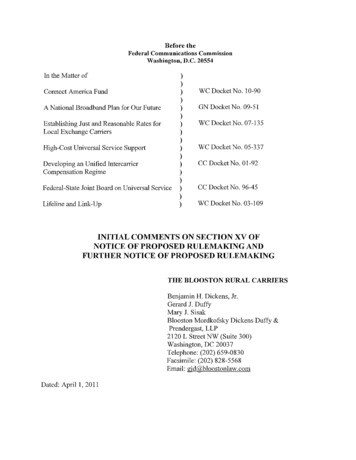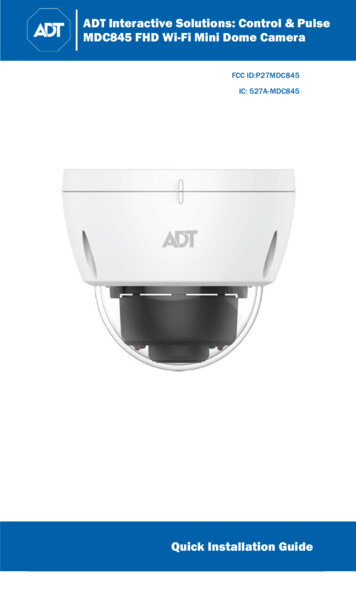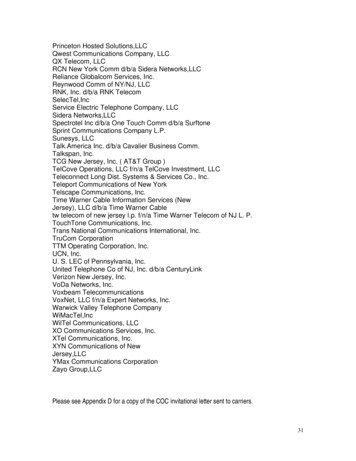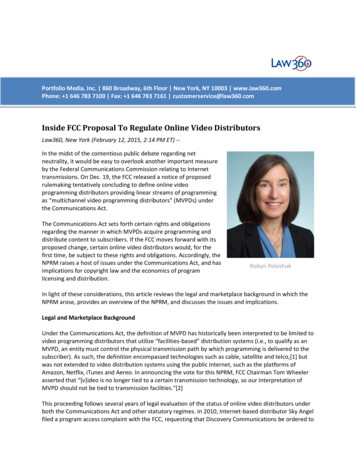
Transcription
Portfolio Media. Inc. 860 Broadway, 6th Floor New York, NY 10003 www.law360.comPhone: 1 646 783 7100 Fax: 1 646 783 7161 customerservice@law360.comInside FCC Proposal To Regulate Online Video DistributorsLaw360, New York (February 12, 2015, 2:14 PM ET) -In the midst of the contentious public debate regarding netneutrality, it would be easy to overlook another important measureby the Federal Communications Commission relating to Internettransmissions. On Dec. 19, the FCC released a notice of proposedrulemaking tentatively concluding to define online videoprogramming distributors providing linear streams of programmingas “multichannel video programming distributors” (MVPDs) underthe Communications Act.The Communications Act sets forth certain rights and obligationsregarding the manner in which MVPDs acquire programming anddistribute content to subscribers. If the FCC moves forward with itsproposed change, certain online video distributors would, for thefirst time, be subject to these rights and obligations. Accordingly, theNPRM raises a host of issues under the Communications Act, and hasimplications for copyright law and the economics of programlicensing and distribution.Robyn PolashukIn light of these considerations, this article reviews the legal and marketplace background in which theNPRM arose, provides an overview of the NPRM, and discusses the issues and implications.Legal and Marketplace BackgroundUnder the Communications Act, the definition of MVPD has historically been interpreted to be limited tovideo programming distributors that utilize “facilities-based” distribution systems (i.e., to qualify as anMVPD, an entity must control the physical transmission path by which programming is delivered to thesubscriber). As such, the definition encompassed technologies such as cable, satellite and telco,[1] butwas not extended to video distribution systems using the public Internet, such as the platforms ofAmazon, Netflix, iTunes and Aereo. In announcing the vote for this NPRM, FCC Chairman Tom Wheelerasserted that “[v]ideo is no longer tied to a certain transmission technology, so our interpretation ofMVPD should not be tied to transmission facilities."[2]This proceeding follows several years of legal evaluation of the status of online video distributors underboth the Communications Act and other statutory regimes. In 2010, Internet-based distributor Sky Angelfiled a program access complaint with the FCC, requesting that Discovery Communications be ordered to
negotiate for continued distribution on the Sky Angel service. Because the protection sought by SkyAngel was only available to MVPDs, the FCC invited comment on whether Sky Angel qualified as anMVPD. The FCC did not ultimately act further on the Sky Angel complaint, which remains pending.Subsequent to Sky Angel, there have been several developments in online video distribution, includingthe Aereo litigation and discussions about net neutrality. It is in this context that the FCC now proposesto expand the definition of MVPD to include Internet distributors and has issued this NPRM to evaluatethis change.Overview of the NPRM’s ScopeIn introducing the NPRM, the FCC acknowledges the wide array of business models that have emergedfor online video distribution, including:(1) Subscription Linear, which makes available continuous, linear streams of video programming on asubscription basis (e.g., Sky Angel, Aereo and the offerings announced by Dish’s Sling TV and SonyPlayStation);(2) Subscription On-Demand, which makes available on-demand content on a subscription basis (e.g.,Amazon Prime Instant Video, Hulu Plus, Netflix);(3) Transactional On-Demand, which provides video on-demand to consumers on a per-episode or perseason/movie basis (e.g., Amazon Instant Video, CinemaNow,Google Play, iTunes, Sony, Vudu, Xbox);(4) Ad-based Linear and On-Demand, which offers linear and/or on-demand video programming on afree, ad-supported basis (e.g., Crackle, FilmOn, Hulu,Yahoo!Screen, YouTube); and(5) Transactional Linear, which offers non-continuous linear programming on a transactional (pay-perview) basis (e.g., UFC).Of these business models, the FCC tentatively concludes that only the first category, entities offeringvideo programming on a subscription linear basis, should be categorized as MVPDs. The FCC bases thisconclusion on a modernization of its historical interpretation of “channel” in the statutory definition ofMVPD. Whereas the prior interpretation viewed “channels” as discrete portions of physical spectrum orbandwidth (which served as the underpinnings for the “facilities-based” requirement noted by ChairmanWheeler), the FCC’s proposed new interpretation understands “channel” as a prescheduled stream oflinear video programming. The FCC seeks comment on this revised interpretation, as well as an“alternative” interpretation that would retain the status quo of “facilities-based” channels.This definitional expansion would confer on these entities certain privileges and obligations under theCommunications Act, in addition to raising collateral implications relating to the Copyright Act, existingcontractual arrangements, and content licensing. Each of these implications is discussed individuallybelow.Implications Under the Communications Act: Privileges and ObligationsExpanding the definition of MVPD would bring certain online video distributors under the regulatoryframework of the Communications Act, entitling them to certain privileges and also subjecting them tospecific obligations. As outlined by the FCC, key privileges for MVPDs include the right to
nondiscriminatory access to certain programming and the assurance that broadcasters will negotiate ingood faith for retransmission consent. At the same time, MVPDs must comply with requirementsrelating to nondiscriminatory program carriage and a parallel obligation for good faith negotiations forbroadcast retransmission consent.In addition, MVPDs are subject to other obligations such as competitive availability of navigationdevices, equal employment opportunities, closed captioning, video description, access to emergencyinformation, signal leakage, inside wiring, and commercial loudness restrictions.The FCC’s program access rules prohibit “vertically integrated” cable operators[3] from impedingcompetition by denying other MVPDs access to content from programmers affiliated with such cableoperators. These rules specifically prohibit discrimination by vertically integrated operators and theiraffiliated networks with respect to whether and on what terms programming will be made available toother MVPDs, including prices, terms, and other conditions of access. The rules include a fewexceptions, including the right of refusal to license programming if piracy cannot be adequatelyprevented as well as consideration of “economies of scale, cost savings, or other . benefits” based on adistributor’s number of subscribers.Conversely, program carriage obligations require that MVPDs negotiate on a nondiscriminatory basisand limit MVPDs from unduly pressuring content providers to license programming in ways that wouldharm competition. For example, MVPDs may not require a financial interest in a programming service orrequire exclusivity as a condition for carriage, or discriminate in carriage based on whether theprogrammer is affiliated with the MVPD.With respect to retransmission consent, the FCC rules currently provide that MVPDs and commercialbroadcast stations are obligated to negotiate with each other in good faith. Violations of the good-faithduty include refusing to negotiate at reasonable times and places, making a single, “take it or leave it”offer, requiring an arrangement that prohibits the station or MVPD from entering a retransmissionconsent agreement with another TV station or MVPD, or other conduct not in good faith under “thetotality of the circumstances.” Designating online distributors as MVPDs would include them in this goodfaith negotiation framework.Collateral Implications1. The Copyright Act and the Communications Act: A Definitional GapThe FCC’s proposed change to the MVPD definition would create a new category of video distributorsunder the Communications Act, which is not recognized under the Copyright Act. The Copyright Act hasits own framework for licensing video content; under copyright, owners of copyrights in broadcaststation programming have exclusive rights to perform their works publicly. Cable and satellite operatorsmay — and generally do — take advantage of compulsory licenses in the Copyright Act to retransmit thecontent contained in broadcast signals; that is, operators of those services do not need to negotiateindividual licenses from each content owner.[4] But the statutory license under the Copyright Act refersto “facilities” and covers only broadcast satellite and cable systems. Moreover, court decisions have held(and theCopyright Office has agreed) that the online retransmission of broadcast signals falls outside thescope of the statutory license.[5]As such, absent a comparable expansion in the definition of cable system under the Copyright Act,online MVPDs would not be eligible for statutory licenses under the Copyright Act. Instead, these
distributors would need to negotiate with individual content owners, obtain licenses from the broadcaststations (which may or may not possess the necessary rights), or seek to establish a collective licensingbody (similar to music performing rights organizations), though that infrastructure is not available today.The FCC recognizes these issues in the NPRM and asks commenters to update the record concerninghow expanding the definition of an MVPD would interrelate with the Copyright Act. Nonetheless,unanswered questions will remain, including how the Copyright Office might respond to the FCC’sinterpretation of certain online video distributors as MVPDs and whether it has the statutory discretionto expand the application of compulsory licenses. And perhaps the biggest question is whether Congresswill react with any statutory changes.2. Contractual Rights and Content Licensing: Potential Impacts and ConflictsIn the event that the definition of MVPD is expanded, application of program access, program carriage,and retransmission consent rights and obligations to online distributors would likely impact, and mayconflict, with existing program license and distribution agreements, and, ultimately, may affect theeconomics of the content licensing industry.As noted above, absent a change in the compulsory copyright framework, broadcast station andnetwork program license agreements may not provide rights for Internet distribution of the underlyingprogramming. Likewise, cable network programming (e.g., TBS, TNT, USA) has never been within thescope of broadcast compulsory licenses. Instead, cable networks have traditionally held copyrights oracquired licenses to distribute their underlying programming via MVPD systems, but may not havecomprehensive rights for Internet distribution.As such, it is unclear what will constitute good faith negotiation and nondiscriminatory access andcarriage of broadcast and cable network programming if existing programming contracts do not grantInternet distribution rights for the full panoply of station or network programming. Would negotiationssimply cover those portions of the linear feed for which rights are obtained, or would the FCC seek torequire programmers be required to go into the marketplace and obtain Internet transmission rights?Further, it is conceivable that existing station and network carriage agreements may restrict distributionby these new online MVPDs, regardless of whether the rights have been cleared.Thus, expanded program access and good faith negotiation rules may result in programmers beingrequired — or pressured — to acquire extensive Internet distribution rights in their program licensesand revise any existing carriage restrictions. As a result, marketplace pricing for content may foreseeablyincrease. In the NPRM, the FCC asks whether the definitional change will impact the economics ofcontent licensing and inflate the cost of programming.Conclusion: A Changing Technology LandscapeOverall, this NPRM represents a significant undertaking to address the changing technology landscapeand raises numerous questions about the impact on the media and content industry. Accordingly,content providers are well advised to examine their program licenses and carriage agreements withregard to Internet distribution rights and restrictions and evaluate whether the definitional changewould alter contractual interpretations. Each company involved in the licensing and distribution ofcontent online should consider its strategy for online offerings in light of the implications arising fromthe FCC’s proposed action.
The NPRM was published in the Federal Register on Jan. 15, 2015. Comments are due Feb. 17, 2015,with reply comments due March 2, 2015. Given the complexity of the issues and the importance of thisproceeding to interested parties, there may be requests for an extension of these deadlines.—By Robyn Polashuk and Lala Qadir, Covington & Burling LLPRobyn Polashuk is a partner in Covington’s Silicon Valley office. Lala Qadir is an associate in the firm’sWashington, D.C., office.The opinions expressed are those of the author(s) and do not necessarily reflect the views of the firm, itsclients, or Portfolio Media Inc., or any of its or their respective affiliates. This article is for generalinformation purposes and is not intended to be and should not be taken as legal advice.[1] The two most commonly known “telco” distributors are AT&T U-Verse and Verizon FiOS, whichtransmit video programming by means of controlled wireline systems.[2] Promoting Innovation and Competition in the Provision of Multichannel Video ProgrammingDistribution Services, MB Docket No. 14-261, FCC 14-210, at 51 (proposed Dec. 19, 2014).[3] Program acces
Inside FCC Proposal To Regulate Online Video Distributors Law360, New York (February 12, 2015, 2:14 PM ET) -- In the midst of the contentious public debate regarding net neutrality, it would be easy to overlook another important measure by the Federal Communications Commission relating to Internet transmissions. On Dec. 19, the FCC released a notice of proposed rulemaking tentatively .

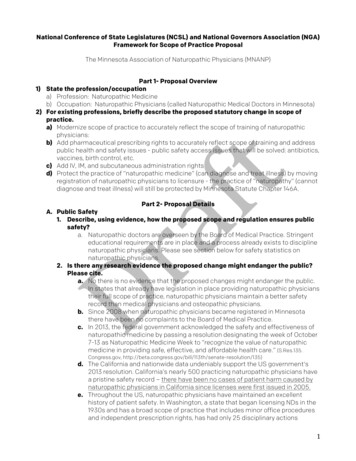
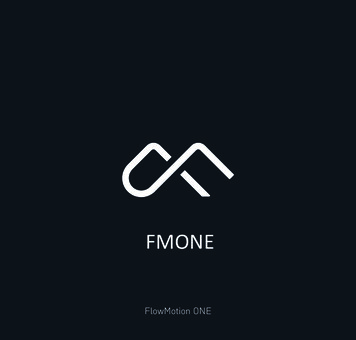
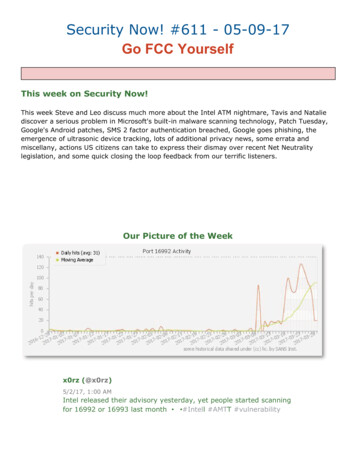
![[ANS AQT80] - FCC ID](/img/3/user-manual-pdf-2735955.jpg)
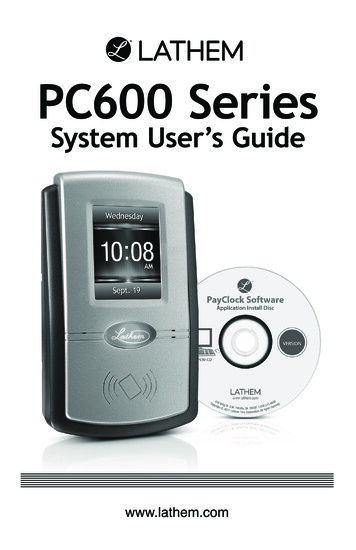
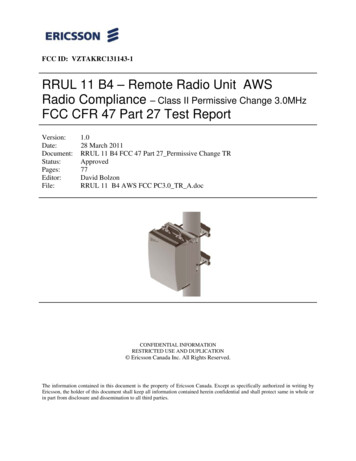
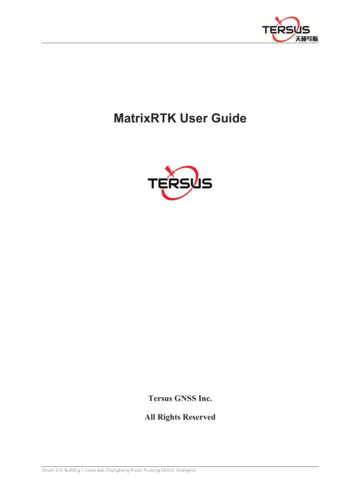
![Ticket: # 3011470 - Re: [FCC Complaints] Re: Billing](/img/9/fcc-complaints-from-alabama-residents-2.jpg)
